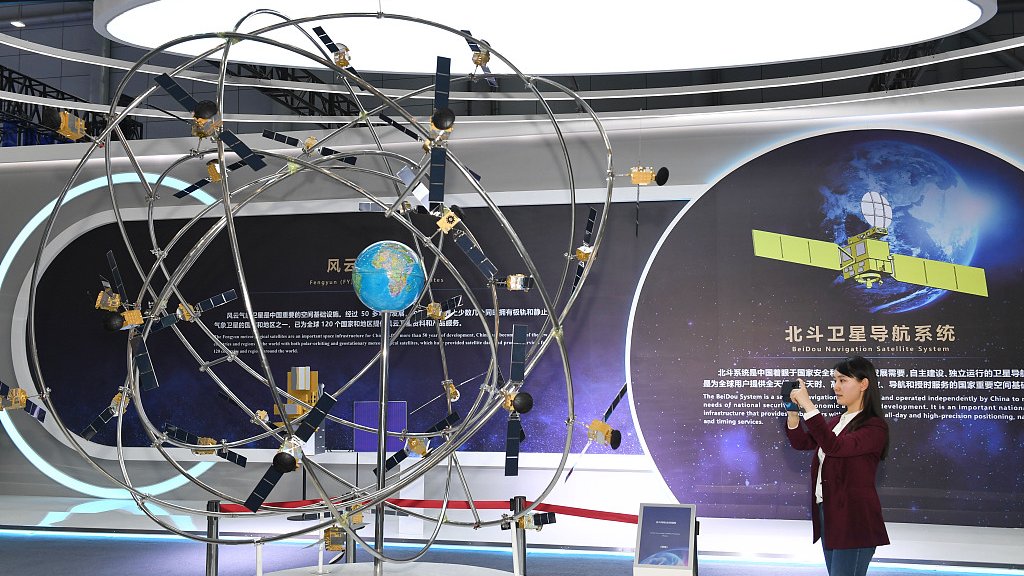You are using an out of date browser. It may not display this or other websites correctly.
You should upgrade or use an alternative browser.
You should upgrade or use an alternative browser.
Chinese Satellites, Beidou Navigation System and related technologies
- Thread starter Strangelove
- Start date
China to build integrated positioning, navigation system based on next generation of BDS by 2035
By Global Times Published: Apr 27, 2023 12:11 AM
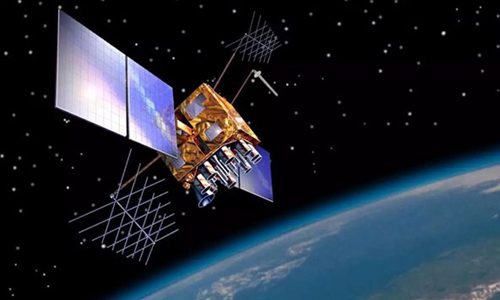
BeiDou
China aims to build a more ubiquitous, integrated, and intelligent comprehensive system with the next generation BeiDou System (BDS) at its core by 2035 to provide efficient positioning, navigation and timing services, according to the China Satellite Navigation Annual Conference held in Beijing on Wednesday.
With the theme of "digital economy, intelligent navigation," the annual conference which runs from Wednesday to Friday aims to use BDS to play a greater and more important role in national economic construction and social development.
More than 4,000 people from the domestic and foreign satellite navigation industry attended the conference online and offline.
The experts and scholars are expected to comprehensively discuss the prospects and huge potential of the innovative integration of digital economy and satellite navigation.
During the conference the first batch of 14 enterprises were awarded the Beidou basic product certification.
BDS has achieved large-scale application in many domestic industries and fields, and has become an important scientific and technological force enabling economic and social development.
By the end of 2021, the total number of terminal products with BDS positioning functions exceeded 1.2 billion units.
In the field of transportation, BDS has been applied in more than 7.9 million cars, 47,000 ships, and 40,000 postal and express delivery vehicles.
In the agricultural sector, the BDS autonomous driving system has been installed in more than 100,000 agricultural machines nationwide.
In the field of water conservancy, BDS has been applied in 2,587 reservoirs to serve hydrological monitoring.
China to develop satellite constellation for deep space exploration
Xinhua | Updated: 2023-04-26 11:22
HEFEI -- China will develop a satellite constellation named Queqiao, or Magpie Bridge, to provide communications, navigation and remote-sensing services for deep space exploration, according to a senior Chinese space expert.
Speaking at the First International Deep Space Exploration Conference held in Hefei, the capital of East China's Anhui province, Wu Yanhua, chief designer of the major project on deep space exploration, said that China plans to build the satellite constellation in three phases.
A pilot of the constellation will be built around 2030 to support the fourth phase of China's lunar exploration program and the construction of the International Lunar Research Station. And a basic constellation will be built around 2040 to realize regional navigation and provide services for manned lunar exploration and deep space exploration for planets such as Mars and Venus, Wu said.
The satellite constellation is expected to be built into an expanded model around 2050 to provide services for exploring Mars, Venus, giant planets, as well as the edge of the solar system, Wu added.
As a part of the constellation, Queqiao 2, or Magpie Bridge 2, a relay satellite for communications between the far side of the moon and Earth, is planned to be launched in 2024, according to the China National Space Administration (CNSA).
The satellite will serve as a relay platform for the fourth phase of China's lunar exploration program, providing communications services for Chang'e 4, Chang'e 6, Chang'e 7, and Chang'e 8 missions.
According to Yu Dengyun, an academician with the Chinese Academy of Sciences (CAS), the future Magpie Bridge constellation will be a space infrastructure and public service platform built and operated in deep space. It will feature the capability of efficient communications, navigation, in-orbit computing, and information storage, etc.
During the conference, China's Deep Space Exploration Laboratory launched a global call for proposals for the design of the Magpie Bridge constellation in a bid to gather new ideas and solutions for the future satellite constellation.
The International Deep Space Exploration Conference, hosted by the Deep Space Exploration Laboratory, is one of the major activities held to celebrate the Space Day of China, which falls on April 24. The two-day event invited more than 500 guests from 14 countries and regions.
New Beidou satellite launches into orbit
By Zhao Lei in Xichang, Sichuan | chinadaily.com.cn | Updated: 2023-05-17 11:23
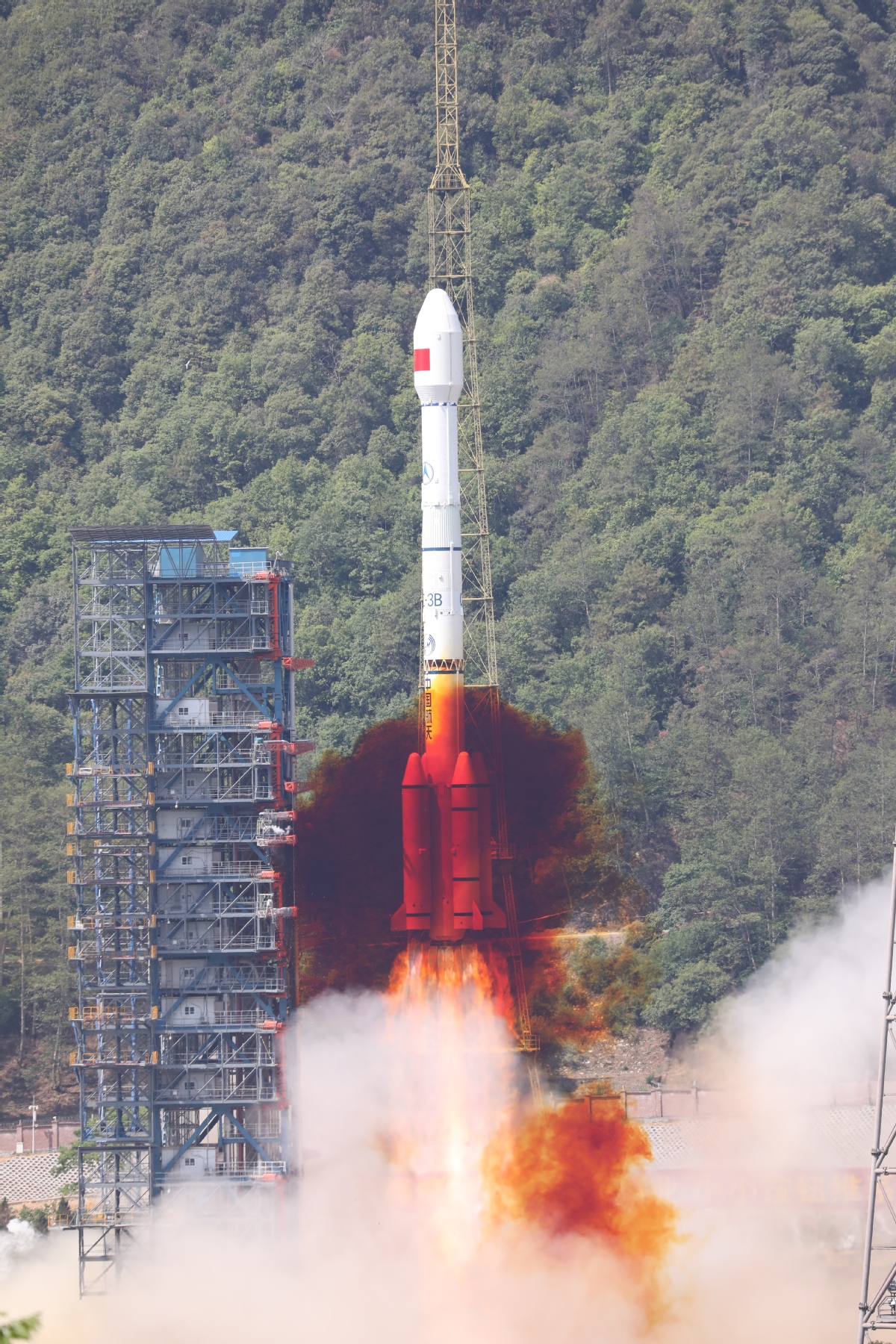
China launched a Long March 3B carrier rocket on Wednesday morning to transport a satellite into space for the country's Beidou Navigation Satellite System, marking the first deployment of a Beidou satellite in three years.
As the countdown ticked down to zero at 10:49 am at the Xichang Satellite Launch Center in the southwestern mountainous region in Sichuan province, eight engines on the Long March 3B's first stage and four boosters sprang to life and unleashed dazzling orange flame as they lifted the 20-story-tall gigantic vehicle into clear skies.
Shortly after the liftoff, the rocket successfully placed the satellite, the 60th in the Beidou system and the first backup craft for the third-generation Beidou network, into a geostationary orbit, announced Deng Hongqin, director of the Xichang center.
Designed and built by the China Academy of Space Technology, the satellite has typical functions of any third-generation Beidou satellite - positioning, navigation and timing. Compared with previous Beidou satellites, it has some upgraded hardware and features stronger signal, faster transmission speed and higher operational stability, said Chen Zhonggui, chief designer of Beidou's third-generation satellites.
Despite being called a backup, the satellite is designed to start working as soon as it enters orbit. Its primary tasks are to expand the service areas of Beidou's short-messaging function, enhance Beidou's positioning accuracy as well as improve the network's operational continuity and reliability, he noted.
Beidou is currently China's largest civilian satellite system and one of four global navigation networks, along with the United States' GPS, Russia's GLONASS and the European Union's Galileo.
Since 2000, a total of 60 Beidou satellites, including the first four experimental ones, have lifted on 45 Long March 3 series rockets from Xichang.
In June 2020, the final satellite to complete Beidou's third-generation network was lifted by a Long March 3B rocket at the Xichang center. The following month, President Xi Jinping announced that the system had been completed and had begun providing full-scale global services.
Currently, there are 46 satellites in active service, which includes the latest one.
According to the most recent statistics from the Global Navigation Satellite System and Location-Based Services Association of China, by the end of 2021, the overall value of satellite-enabled navigation and positioning services in China stood at 469 billion yuan ($67 billion), a 16.3 percent increase year-on-year.
China plans to establish the next generation of the Beidou system by 2035. The new version will be "omnipresent, smarter and more integrated" and, upon its completion, there will be Beidou service not only on land and sea, but also in the sky, outer space and deep within the oceans, according to the China Satellite Navigation Office.
supercat
Colonel
Beidou is available on almost all Chinese smartphones.
China launches Lijian-1 Y2 rocket carrying a record 26 satellites
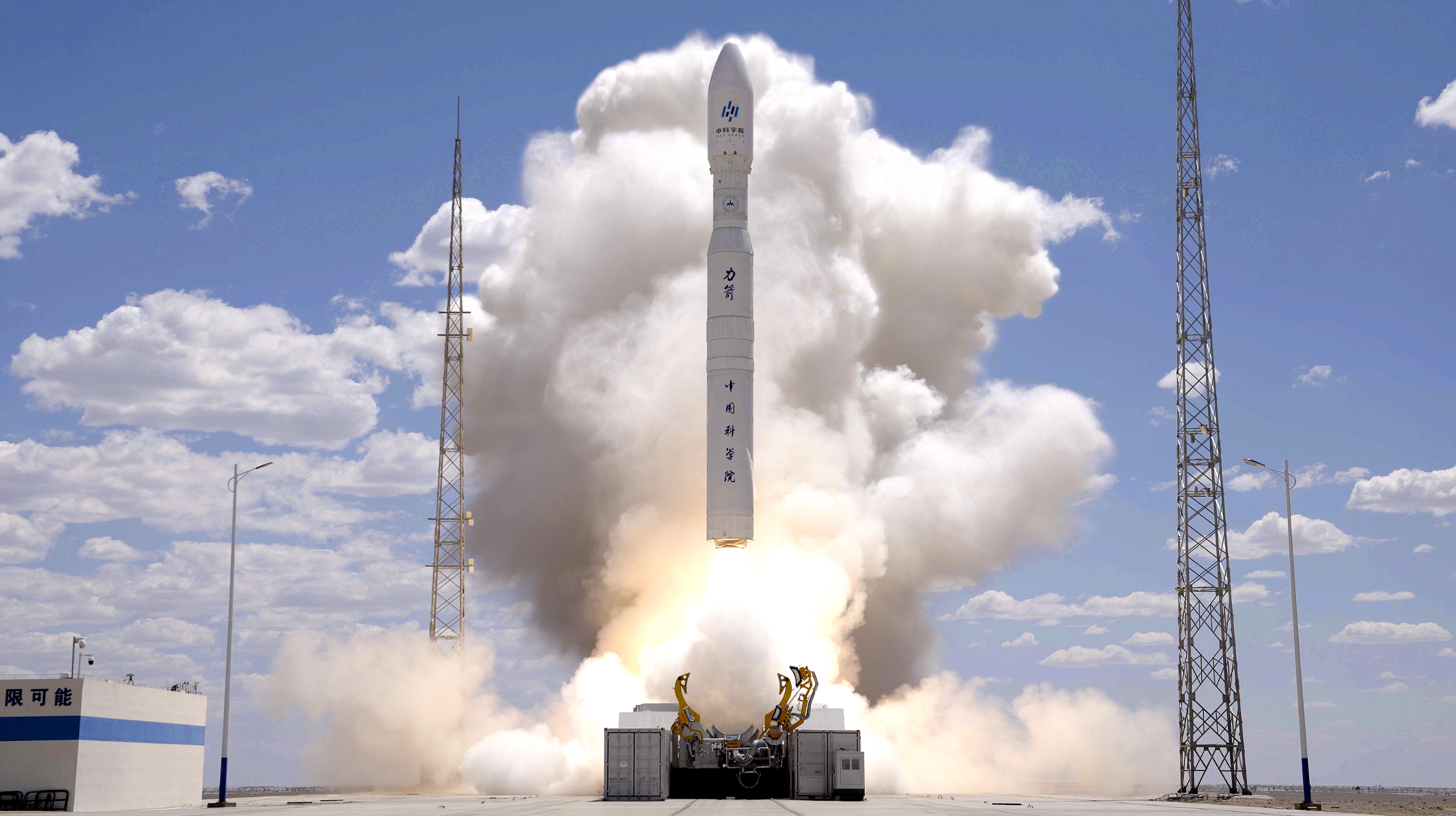
A Lijian-1 carrier rocket has blasted off from the Jiuquan Satellite Launch Center in northwestern China, sending a record 26 satellites into orbit. It is the Lijian-1's second flight and the most satellites carried by one rocket in Chinese history. The Lijian-1 is by far the country's biggest solid-fuel carrier rocket and represents innovation and speed in commercial launches. The satellites sent by the Lijian-1 Y2 carrier rocket will be mainly used for technology verification and commercial remote sensing information, according to the launch center and developers.
China tests first low-Earth orbit internet constellation in South China Sea
Technology 11:17, 18-Jun-2023
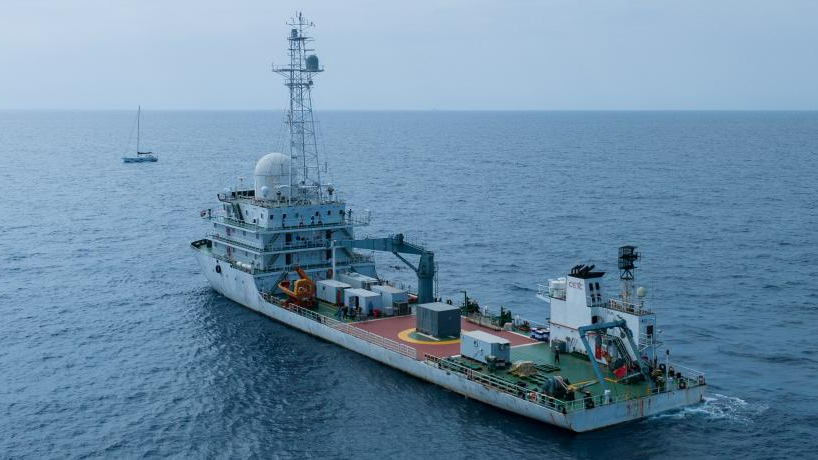
This aerial photo taken on June 15, 2023, shows the "Dian Ke No.1" comprehensive test ship sailing in the South China Sea. /Xinhua
Open-sea testing of China's first low-Earth orbit (LEO) broadband communication test constellation was conducted in the South China Sea.
Researchers from the GalaxySpace, a Beijing-based satellite maker, and several scientific research institutions conducted open-sea testing of the country's first LEO broadband communication test constellation in the South China Sea.
The testing aims to verify the collaborative communication coverage ability of high-Earth orbit and LEO satellites and unmanned aerial vehicles.
In , six satellites produced by GalaxySpace were sent into space from the Xichang Satellite Launch Center, together with the first broadband communication satellite developed by GalaxySpace and deployed in low-Earth orbit, forming China's first LEO broadband communication test constellation.
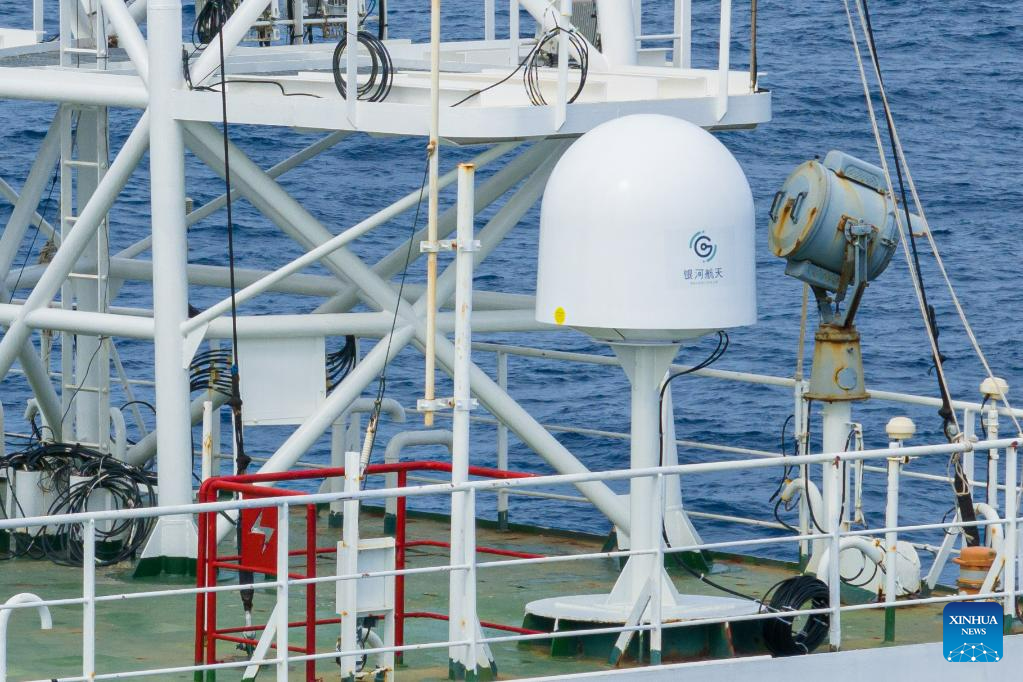
This aerial photo taken on June 15, 2023, shows the internet terminal of low-Earth orbit satellites onboard the "Dian Ke No.1" comprehensive test ship. /Xinhua
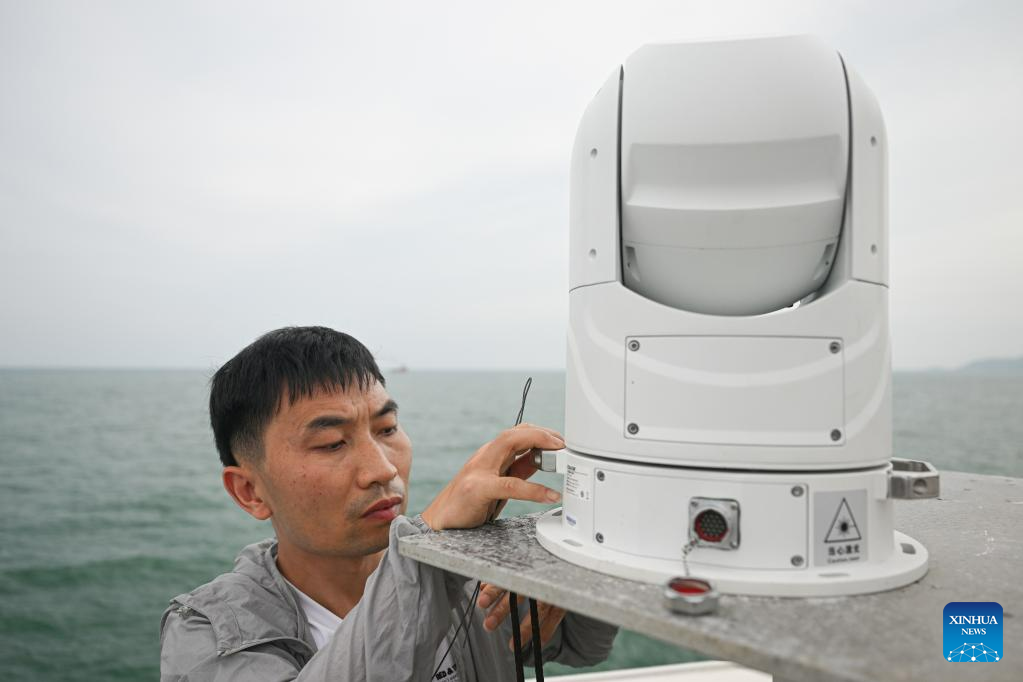
An employee installs a high-definition optoelectronic device before conducting open-sea testing of the low-Earth orbit broadband communication test constellation at the "Dian Ke No.1" comprehensive test ship, June 14, 2023. /Xinhua
China's first LEO broadband communication test constellation
One remote sensing satellite and six LEO broadband communication satellites that formed the first pilot version of a satellite internet constellation were sent into orbit atop a Long March-2C carrier rocket at 2:01 p.m. local time on March 5, 2023, from the Xichang Satellite Launch Center in southwest China's Sichuan Province.
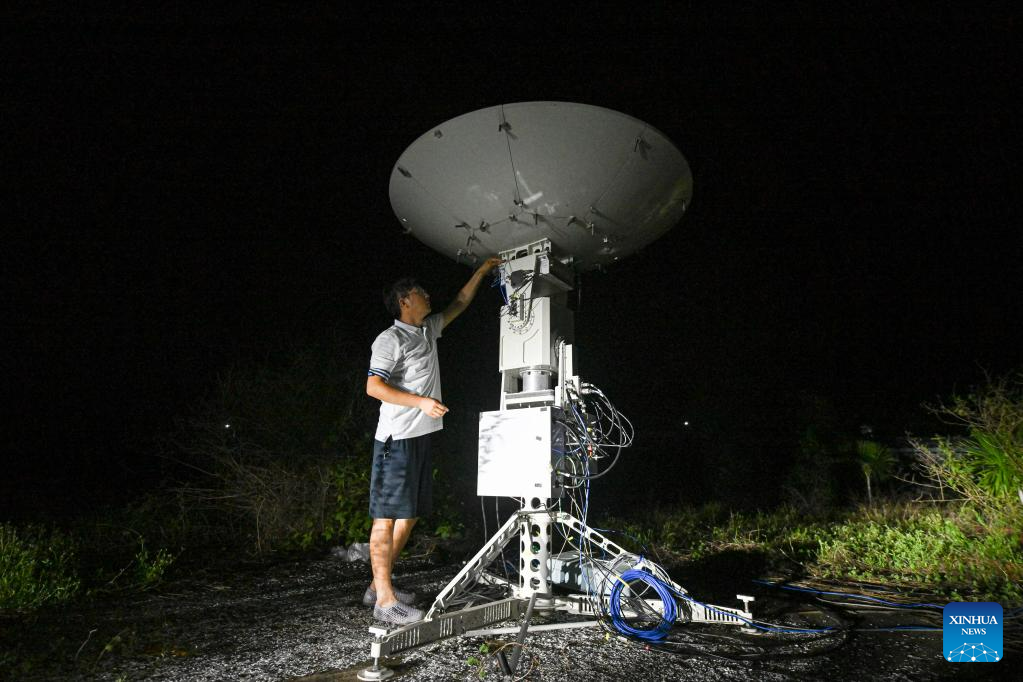
An employee tests a signal reception device for low-Earth orbit satellites at a low-Earth orbit gateway station in Lingshui Li Autonomous County, south China's Hainan Province, June 13, 2023. /Xinhua
The LEO broadband communication satellites, each weighing 190 kilograms, were mass-produced by China's private satellite developer GalaxySpace. These satellites will be part of a testing network of satellite internet, nicknamed "Mini-spider Constellation," the company said.

Employees test an unmanned aerial vehicle for conducting open-sea testing of the low-Earth orbit broadband communication test constellation at the "Dian Ke No.1" comprehensive test ship, June 15, 2023. /Xinhua
Together with the company's first satellite of its kind put into orbit two years ago, the seven satellites build a testing network to provide uninterrupted low-orbit satellite broadband communication services for more than 30 minutes at a time, becoming a major experimenting platform for China's satellite internet constructions.
China's BDS serves over 200 countries, regions
Source: Xinhua
Editor: huaxia
2023-07-05 20:16:15
BEIJING, July 5 (Xinhua) -- China's BeiDou Navigation Satellite System (BDS) has served more than 200 countries and regions to date, according to a commendation ceremony for the construction of BDS-3 held in Beijing on Wednesday.
China successfully launched 30 BDS-3 satellites in two and a half years, completing BDS-3 six months ahead of schedule in 2020.
BDS-3 is a giant, complex space system with the largest scale, widest coverage, highest service performance requirements and closest connection with daily life that China has built so far, according to the ceremony.
BDS has been widely used in various industries related to the country's economic and social development, promoting transformation and upgrading, and bringing remarkable economic and social benefits.
As one of four global satellite navigation systems recognized by the United Nations, BDS has actively fulfilled its international obligations in the fields of civil aviation, maritime affairs, and search and rescue, contributing Chinese wisdom to the construction of a community with a shared future for all.
Next, China will make every effort to promote the market-oriented, industrialized and international development of BDS scale application to serve the world and benefit all people, according to the ceremony.
antiterror13
Brigadier
Finally they acknowledging that Beidou is significantly more advanced and more coverage than the current GPS
I don't understand who is threatening who? I think the other way around as usual
as usual
I don't understand who is threatening who? I think the other way around

